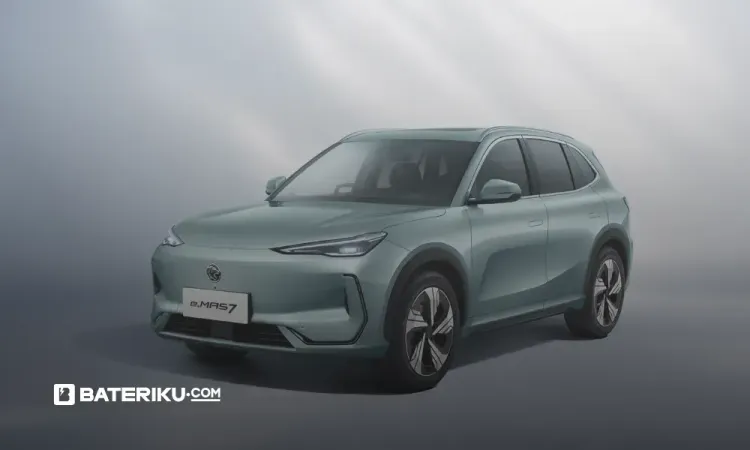The automotive world is moving fast, and nowhere is this clearer than in the rise of electrified vehicles. In Malaysia, terms like BEV, HEV, and PHEV are becoming more common as car buyers explore options beyond the traditional petrol or diesel engine. But with so many acronyms and tech jargon, it can be confusing to know what each type actually means and more importantly, which one is right for you.
Whether you are considering a fully electric car like the BYD Atto 3, a practical hybrid such as the Haval H6 HEV, or a plug-in hybrid from brands like BMW and Volvo, it pays to understand the differences. This guide breaks down what BEV, HEV, and PHEV really are, highlights the models available in Malaysia, and compares their similarities, differences, and best use cases.
BEV, HEV, PHEV: Understanding the Eco-Friendly Drive Options
By the end of this piece, you will know exactly which option matches your driving style, budget, and lifestyle.
What is a BEV (Battery Electric Vehicle)?
A Battery Electric Vehicle (BEV) is a 100% electric car. No petrol or diesel engine, just a battery powering the electric motor. These beasts have zero tailpipe emissions and must be plugged in to charge, whether at home or a public charging station.
Pros:
- Silent, smooth, low-maintenance.
- Cheapest to run per kilometer. No fuel costs, fewer moving parts.
- Emission-free driving, ideal for eco-conscious buyers.
Cons:
- Charging takes time (though fast-chargers help).
- Range anxiety if infrastructure is not ready.
- Upfront prices can be higher than ICE or hybrids.
BEV Cars in Malaysia:
- 1. BYD Atto 3 – Launched Dec 2022; deliveries from Jan 2023. Offered in Standard and Extended Range; updated Ultra (60.4 kWh, ~480 km) variant rolled out by March 2025.
- 2. BYD Dolphin – Arrived in Malaysia July 2023; Dynamic Standard and Premium Extended Range trims available.
- 3. Mazda MX-30 EV – Introduced June 2022, deliveries started early 2023. Comes in two trims with ~199 km range, priced around RM199k.
- 4. Proton e.MAS 7 – Proton’s first homegrown BEV. Launched December 2024; basic and premium priced at RM109,800 and RM123,800 respectively.
 (Credit: Sime Motor)
(Credit: Sime Motor)
Newsflash: Malaysia’s EV goal: 20% of new car sales by 2030, meanwhile BEV sales surged 112% in H1 of a recent year.
What is HEV (Hybrid Electric Vehicle)?
A Hybrid Electric Vehicle (HEV) combines a petrol/diesel engine with an electric motor and a small battery. Unlike plug-in hybrids, HEVs can not be plugged in; the battery recharges via the engine and regenerative braking.
Pros:
- Better fuel economy and lower emissions than pure ICE cars.
- No charging hassle, just fill up at the pump.
- Affordable hybrid entry-point for those wary of full EVs.
Cons:
- Still burns fossil fuel; only a little greener.
- No electric-only range beyond a few kilometers.
- More complex than ICE, potentially more maintenance.
HEV Cars in Malaysia:
- 1. GWM Haval H6 HEV – Rolled out October 2024. Turbo-petrol hybrid, initial imports from China, later locally assembled. Launched at about RM139,800.
- 2. The Toyota Corolla Cross Hybrid - another popular HEV in Malaysia, launched in 2021. The latest price hovers around RM140,000 – RM150,000. With fuel tank capacity of 36 liters, the fuel efficiency was around 23 km/l. May vary between 750–850 km range per full tank depending on driving style and conditions.
 (Credit: Toyota Malaysia)
(Credit: Toyota Malaysia)
While the local HEV market is still budding, expect more offerings as manufacturers push for hybrid options ahead of stricter emissions standards.
What is PHEV (Plug-in Hybrid Electric Vehicle)?
A Plug-in Hybrid Electric Vehicle (PHEV) blends a petrol/diesel engine with a larger battery and an electric motor. Unlike HEVs, PHEVs can be plugged in for charging which allows a meaningful electric-only range (10–100 km depending on model).
Pros:
- Can do short commutes on pure electric power.
- Engine kicks in for longer trips, means no range anxiety.
- Lower fuel use and emissions, if charged regularly.
- Flexible and practical for mixed-mode drivers.
Cons:
- Charging still required for best efficiency.
- More complexity. Which means higher purchase and maintenance costs.
- Battery and ICE combined add weight and cost.
PHEV Cars in Malaysia:
- BMW PHEV Range – Includes models like 750e xDrive, X3 PHEV, X5 xDrive50e, 330e, XM. Prices and specs vary; electric ranges up to ~110 km. Charging via home wallboxes or public stations.
- Volvo PHEVs – XC90 and XC60 plug-in hybrids available in Malaysia. The XC90 offers over 70 km electric range; XC60 blends smooth EV drive with petrol backup.
 (Credit: Volvo Malaysia)
(Credit: Volvo Malaysia)
ICE Cars
For your information aka FYI, traditional Internal Combustion Engine (ICE) are vehicles rely solely on petrol or diesel. They are cheap to buy, ubiquitous, and fast to refuel but they emit significant CO₂ and are increasingly facing regulation and will be phase-outs in many markets.
HEV vs PHEV vs BEV: Similarities & Differences
| Feature | BEV | HEV | PHEV |
|---|---|---|---|
| Drive source | Electric motor only | Engine + electric motor + small battery | Engine + electric motor + larger battery |
| Charging method | Plug-in required | Regenerative braking, not plugged | Plug-in and regen charging |
| Electric-only range | Varies (100–400+ km) | Typically 1–3 km | Typically 10–100 km |
| Emissions | Zero tailpipe emissions | Reduced emissions vs ICE | Low emissions if used as EV; else moderate |
| Complexity | Simpler drivetrain | More complex than ICE | Most complex, engine + big battery + control |
| Best for | Full EV users | Drivers wanting easy efficiency boost | Drivers needing flexibility & some EV drive |
Which is the Best Choice?
The answer to this dilemma is, it depends.
- Go BEV if you can charge at home or work, drive mostly locally, and want zero-emission motoring.
- Choose PHEV if you want EV-style driving but still need longer range. Great for mixed-distance trips.
- Stick with HEV if you want slightly cleaner driving without the charging fuss. Good bridge from ICE to EV.
- ICE remains viable only where EV infrastructure is poor but beware future restrictions and growing fuel costs.
Malaysia’s Landscape & Recommendations
Malaysia’s EV growth is picking up fast, projected 20% new-car sales by 2030, and BEV sales jumped 112% recently. So this are some recommendations:
- Go BEV (e.g. Atto 3, Dolphin, MX-30 EV, Proton e.MAS 7) if you drive daily and have charging access.
- Pick PHEV (e.g. BMW or Volvo options) if you want flexibility for longer trips plus electric capability at home.
- Consider HEV (e.g. Haval H6 HEV) if you want better fuel economy and simpler usage. No charging needed.
- Use ICE if infrastructure is lacking, but know that costs and restrictions will rise.
Understanding BEV, HEV, PHEV is key to a smarter, greener ride and the right choice depends less on hype and more on your needs:
- BEVs = cleanest, but charging-dependent.
- PHEVs = flexible, practical blend.
- HEVs = simple, modest improvements.
- ICE = familiar but fading.
Malaysia’s market is growing stronger with local BEVs like the Proton e.MAS 7, BYD models, and global brands offering PHEVs and HEVs. The future is electric, so choose what fits your road, wallet and charging habits.
If you or anyone you know have an ICE, BEV, HEV or PHEV car needing a jumpstart for dead battery, just contact Bateriku. With more than 220 pitstops across Malaysia, you will get a lightning fast service to keep you moving in no time.

